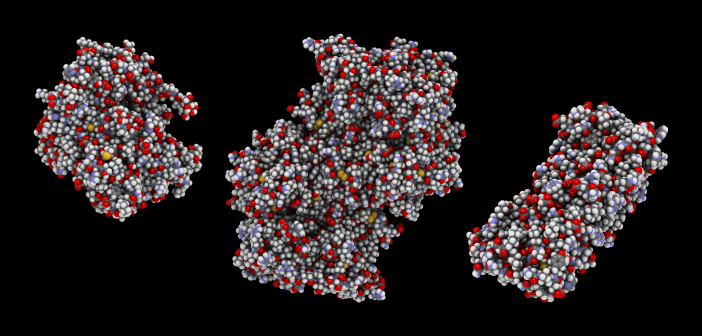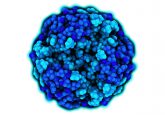Protein biomarkers: is the assessment of selectivity impacted, based on the use of the intact protein vs digested peptide? An interview with Megan Cooley

 Megan Cooley
Megan Cooley
Associate Director of Bioanalytical Services
ICON Bioanalytical Laboratories (KS, USA)
Megan Cooley is Associate Director of Bioanalytical Services at ICON. Her field of expertise includes LC-MS and LC and CE with electrochemical detection. Megan has worked in the pharmaceutical industry as a bioanalytical scientist in clinical project teams for 7 years. She supports the LC-MS operational science teams in ICON’s laboratories located in Lenexa, KS. She holds a Doctorate degree in Bioanalytical Chemistry from the University of Kansas (USA).
Why do we evaluate selectivity?
It is important to distinguish between selectivity and specificity in relation to this topic. Selectivity refers to the ability of the assay to accurately quantify the analyte of interest in the presence of other known or unknown interferences. The term specificity is applicable to modalities such as monoclonal antibodies, modified proteins or protein biomarkers, as examples, where assay critical reagents can be impacted by other endogenous components. It is important to distinguish between these terms when conducting experiments or interpreting results from your assay.
LC–MS/MS has been traditionally used for the quantitation of small molecules. Due to the non-selective means by which samples are extracted in this space compared to traditional large molecule assays (i.e., ELISA) selectivity is generally assessed at the lower limit of quantitation (LLOQ) for LC–MS/MS. Testing is performed in this manner since concentrations at or near the LLOQ would be impacted the most depending on the level of interference observed. Although, this same argument still applies to large molecule modalities, assay critical reagents used for the selective and specific capture of the molecule of interest, coupled with mass spectrometry makes endogenous interferences less problematic when assessing selectivity. However, the specificity of the critical reagents should be evaluated as mentioned previously when distinguishing selectivity and specificity. This evaluation should be carried out at both the LLOQ and upper limit of quantitation (ULOQ) for the assay to ensure: 1) that endogenous molecules are not out competing for binding with critical reagents as is the case with immunoprecipitation assays and 2) that quantitation is not impacted by the quantity of assay critical reagents being used.
What makes biomarkers challenging when assessing assay selectivity?
The selection of surrogate peptide(s) is critical to consider when assessing selectivity for ‘bottom-up’ protein/peptide analysis. This is necessary for all protein and peptide analysis requiring the use of a surrogate peptide. During method development, surrogate peptide candidates are selected and evaluated based on the enzymatic digestion chosen (e.g., trypsin, chymotrypsin, LysC, etc.) using predictive software. The surrogate peptide candidates are compared to the primary biological sequence e.g., the human genome, to detect known endogenous interferences. The remaining unique surrogate peptide candidates are then assessed in a matrix as well as a surrogate matrix, as applicable. Consideration is made for the avoidance of peptides susceptible to post-translational modification (PTMs) such as the formation of disulfide bonds, oxidation and phosphorylation. Reduction and alkylation can be used to mitigate the formation of disulfide bonds and of free Cys, respectively. However, it is best practice to avoid the use of sequences susceptible to these PTMs.
A significant consideration as with any biomarker assay, protein aside, is the selection of a surrogate matrix. The surrogate matrix should behave similarly if not identically to that of the primary matrix. An assessment of parallelism should be performed in development and then repeated in validation.
What information is lost when digesting a protein of interest for analysis by LC–MS/MS that would be relevant?
When thinking about proteins or proteins that are biomarkers, structure and function are intrinsically related. Typically, mass spectrometers used for quantitative analysis, especially within most CROs lack the unit resolution necessary for intact mass analysis of proteins (i.e., triple quadrupole mass spectrometry, MS/MS, versus Time-of-Flight mass spectrometry, TOF-MS). Although TOF-MS instrumentation offers the unit resolution to provide quantitation and characterization of intact proteins, ‘top-down’ analysis, the ionization efficiency of these large modalities remains problematic thereby limiting the LLOQ. Therefore, ‘bottom-up’ analysis is utilized to provide sequence-wide coverage for the protein using representative unique surrogate peptides. As summarized in question two, these are selected for quantitation and represent the intact modality. Due to the criteria for surrogate peptide selection described in question two and downstream digestion ultimately used for quantitation, functional information is lost. That being said, when we are solely interested in quantitation, we are asking for a quantity that is present in response to a drug being dosed, or within a given stage of disease as a level of expression compared to healthy normal. But how does any of this impact direct quantitation by LC–MS/MS? One could argue it does not matter. Although the structural integrity of the molecule is critical if using immunoprecipitation as a means of extraction, the structural integrity in relation to the sample does not matter for quantitation by LC–MS/MS.
Does this loss affect the assessment for assay selectivity?
The loss of structure that occurs with denaturation and digestion has no impact because of the nature of the detection. This is perhaps, above any other, the most critical reason why one would want to use LC–MS/MS for protein or protein biomarker work over more traditional ligand binding platforms. Ions generated in the source are selectivity chosen in the first quadrupole based on the mass-to-charge of the unique digested peptide, those specific ions are then fragmented into daughter ions in the collision cell where only the daughter ions specific to the parent are selected and then detected.
What additional aspects of validations are of concern when assessing protein biomarkers or other therapeutic modalities?
One of the larger concerns when developing methods for proteins or other large molecules is the recovery of the molecule from the matrix. Is it good enough to say that recovery is consistent over the range of the assay? Does the percent recovery from the matrix provide critical information to understand more broadly what is happening biologically? If, for example, the protein of interest is bound to another protein endogenously, then how do you ensure that you are accurately representing the quantity of total protein at any given time? In small molecule assays stable label internal standards are used to track the molecule throughout the extraction compensating largely for matrix effects. With hybrid assays, especially where capture antibodies are used, there is no definitive way to accurately determine the true recovery from the matrix. Direct digestion somewhat circumvents this concern simply by the nature of the approach, it truly is an assessment of total protein in the sample. With regards to either approach, if low recovery is observed additional steps should be taken to assess digestion conditions, evaluate the use of a different enzyme or consider if acid dissociation would further improve recovery.
This interview is part of the Bioanalysis Zone Spotlight on hybrid LC-MS/MS assays. For more expert opinions on this topic, visit our feature homepage.
In association with:





